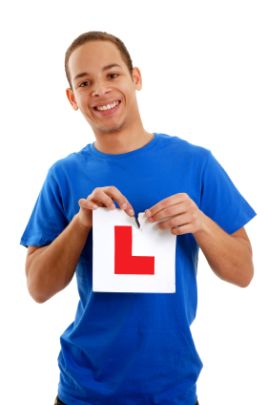What to expect at a hazard perception test
The test has fourteen different clips, as outlined in the article entitled 'how to pass the hazard perception test'.
Each of those clips starts counting down from ten to zero, in order to alert you that the clip is about to start, and that you should be ready to look at the screen to find the hazard as quickly as you can.
Because you click the mouse to tell the computer that you've identified a hazard, the computer feedbacks to you by means of a red flag appearing on the screen. There is one clip that contains two hazards, and this means that you are able to click more than once; this will mean that another flag appears and so there will be two flags when you think that there were two hazards to correspond to the two clicks that you make. Note that this gets cleared in between clips rather than building up, so each click will begin afresh without any red flags on the screen.
So, that is how the actual mechanism of the hazard perception test works - a series of clicks that you must click the mouse on at each time that you see a hazard. The best advice is to be sure that you are seeing a hazard rather than trying to guess too early. Whilst there are less marks if you are a little slower to find the hazard, it is much better to get a few marks for seeing the hazard when you are sure rather than guessing or coming in to early when something is not infact a hazard.
You should never try and second guess. Actually treating it like you really were driving and imagining what would stand out and grab your attention is a good way of doing it - when something grabs your attention the chances are that it is because it is either a potential or a developing hazard.
Related Articles...
Vehicle's registration certificate
A vehicle has a document called a V5C, and this is the registration certificate for the vehicle. However this document by itself is not alone proof that the person selling you a vehicle actually...
Practical Driving Test
There is an online booking system available for a practical driving test which you can access from the DirectGov website.
The web address to do this is: ...
What to do if you breakdown at a level crossing
Driving is potentially dangerous, but it is important not to worry about things that could happen when driving but at the same time you should know what to do in the unlikely event that something...
Theory test case studies
One of the relatively new elements added to the driving theory test is what is called the case study element. This was introduced on 28th September 2009, and there is one case study in the theory...
How Pass Plus Works
What does pass plus contain? Well, it has six different modules and each of these ones focuses on a different set of conditions in which you might have to drive. These are in and around the town,...
Tips on joining a motorway
Joining and leaving the motorway are generally considered the more tricky elements of the journey. When it comes to leaving the motorway, it is all about selecting the right exit and moving over to...
Car Driving Test Fees
This article looks at the costs, which were correct as of October 2009.
A standard car and motorcycle theory test costs £31.
In terms of the practical test, the price is a good deal...
The Advanced Driving Test
There are advantages to continuing to study driving by means of a course like the advanced driving test, because it will help to give you the chance to develop your skills even further than you had...
Regulations relating to stopping
When you are driving you may not necessarily think much about stopping and simply stop automatically when a light is on red. But infact knowing when you should stop on the road is very important...
Why communication matters
When you are driving, in the vast majority of occasions there will be at least a fair number of other road users on them at the same time as you. This means that they will be reacting to how YOU...
Back to home page of driving theory test questions

